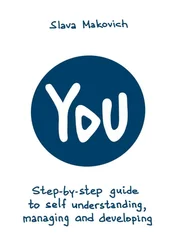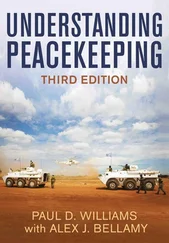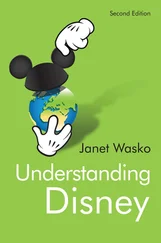To my surprise (shock, in fact), there was hearty applause when I showed my skydiving picture and said my punch line: “If not interested in this activity, should you be diagnosed with hypoactive skydiving disorder ?” Evidently, a significant number of clinicians, perhaps a majority of these modern therapists, recognized that sex is only one of many possible passions that people can have, and felt that we shouldn’t impose our valued passions on others. In this applause, there may also have been recognition that some of their colleagues have possibly been overdiagnosing sexual problems and imposing, perhaps if only implicitly, their own values on others.
So, is there only one right way to live a human life?
CHAPTER 10
A Monster in All of Our Lives
John Money, perhaps the most famous twentieth-century sexologist after Alfred Kinsey, William Masters, and Virginia Johnson, was inspired once by a poem he read outside a cottage on Fire Island (an island retreat just outside of New York). The first line read, “There is a monster in all of our lives.” Money amended the line, adding the adjective “unspeakable” to the word “monster,” and used it to frame the main idea of one of his many books on sexology (Money, 1994). He believed that this phrase— unspeakable monster —was an apt description of the sexual and other secrets that often plague people. Thus, a monster is often lurking, although the person does not (or cannot) speak directly about it. However, an astute observer can discover it by some telltale signs, particularly irrational behaviors, as the person tries to cope with life’s challenges.
There is a famous painting by seventeenth-century artist Henry Fuseli called The Nightmare , in which a sleeping woman is seductively draped over her bed, and a monster—in this particular case, an incubus—sits on her belly. An incubus is a legendary demonic creature that has intercourse with sleeping women. From a psychological perspective, the male incubus and its female equivalent (succubus) are creations of the mind that symbolize humans’ powerful and uncontrollable sexual nature, along with, perhaps, our desire to abdicate to supernatural forces our personal responsibility for any disturbing sexual inclinations; hence, artful characters to represent Money’s notion of an unspeakable monster.
Unspeakable monsters are specific to the time and the culture in which one grows up and lives; thus, they are partially socially constructed. Average adolescent boys from a strict Catholic upbringing in the 1950s in the Western world probably had masturbation as their unspeakable monster, whereas the masturbation monster of today for average adolescent American boys, Catholic and otherwise, may be less ferocious than it once was.
It is probably true that, if you accept Money’s description, many sexual people have unspeakable (sexual) monsters. The chapter on the madness of sex attests to this fact: untold numbers of people have sexual secrets that plague them. But do some asexual people also have monsters, unspeakable and otherwise? Although not attracted to others in a traditional sense, asexual people may be sexual in other ways, and some may be reluctant to reveal this (Bogaert, 2008). For example, some asexual people may have odd paraphilias that they do not want to discuss with the world, and that perhaps they are even reluctant to admit to themselves. So, are some asexual people truly and utterly mad, just like the rest of the sexual planet?
At one point in my first paper on asexuality (Bogaert, 2004), I posed the following question: “How might people with atypical sexual proclivities respond to the statement, I have never felt sexually attracted to anyone at all ?” This led me to ask whether some asexual people might have unusual sexual interests (i.e., paraphilias). After all, if someone is not attracted to people, they still might be attracted to something else. In a number of papers (Bogaert, 2004; Bogaert, 2006b; Bogaert, 2008), I suggested that this is an interesting possibility, but I also suggested that it is unlikely that a majority of asexual people have paraphilias, because “never having felt sexual attraction to anyone at all” implies no level of human partner involvement/interest. In short, it would exclude people who are gay, bisexual, or straight, as well as most people with an unusual sexual attraction (e.g., fetishists). This is because some level of sexual attraction to human beings remains within those with paraphilias, even if their primary interest is in a paraphilic object—for example, a fetishist’s interest in women’s high-heeled shoes. I also suggested that it is unlikely that most asexual people have an extreme paraphilia, because, first, they are quite rare, and second, most asexual people are women. Women are much less likely than men to have a paraphilia (Cantor, Blanchard, & Barbaree, 2009).
So, no (secret) sexual attractions in asexuals? Well, not necessarily. My contact with self-identified asexuals has suggested that some do indeed have very unusual sexual attractions, even if they have reported little or no sexual attraction to human beings (Bogaert, 2008). For example, some masturbating asexuals have indicated to me that there is a persistent theme, often very unusual, in their sexual fantasies. In other words, some people who lack attraction to others, some of whom identify as asexuals, do indeed have a paraphilia. [36] It is important to remember that many asexuals do not masturbate and/or have no fantasies (or at least no consistent theme in them), and hence do not have a paraphilia (see chapter 5 on masturbation).
Also, the issue raised in chapter 5 of the “disconnect” between fantasy and masturbation for some asexuals is relevant here. In particular, the fantasies of asexual people, when they do occur in a consistent or systematic way, often are constructed in such a way that they themselves are not part of the sexual acts they are fantasizing about or viewing (e.g., as in viewing a porn film)—in other words, they are not connected to anything or anyone sexual. It is as if their bodies, or (more correctly) aspects of their mind related to sexual arousal but not fully connected to their identity, need sexual stimulation to receive sexual release/pleasure. This is true even if their own identities, or who they are as individuals, are not sexual (i.e., not sexually attracted to others).
One asexual person on the AVEN website describes it this way: “I almost invariably think of fictional characters. My thoughts have never involved people I know, and they have never involved myself” (Vicious Trollop, 2005, July 25). Another on AVEN writes, “It’s scenes in 3rd person; I may have a generic male character which is kind of me, but it’s still separate from me, mentally watched rather than participated in” (Teddy Miller, 2005, July 25).
Still another AVEN participant writes, “The point isn’t voyeurism, either: the scene doesn’t turn me on because I’m watching it, it turns me on because it’s sexually charged (and I’m acting as an emotional leech). I may have a character that I identify more with… but it’s not a stand-in for me; it acts like a viewpoint character in fiction” (Eta Carinae, 2005, July 25).
These quotes suggest that some asexual people’s fantasies, when they do have them, do not involve their own identities. Instead, their fantasies more often involve people they do not know or, more specifically, fictional characters or no one that could be connected to their identity in real life. These themes reinforce the idea that many masturbating asexuals may need sexual stimulation to receive sexual release/pleasure, but this stimulation is disconnected from their identities.
One question that emerges is this: Do these people have a “sexual orientation”—that is, a persistent erotic inclination toward others—given that they seek out and respond to consistent forms of sexual stimuli that contain people? This is an interesting question, at least to me. It might be argued that their bodies (or, more accurately, aspects of their brains related to arousal) do have a “sexual orientation” of sorts, but that they themselves, or their identities, do not.
Читать дальше












